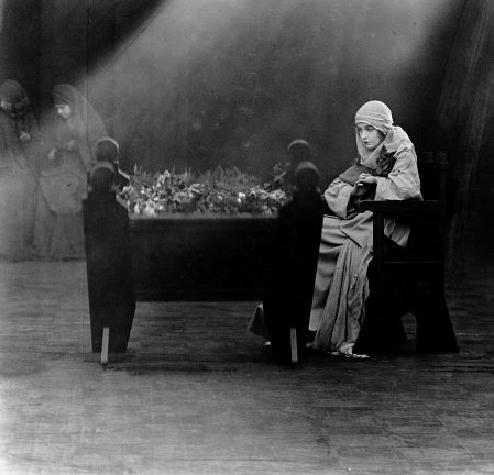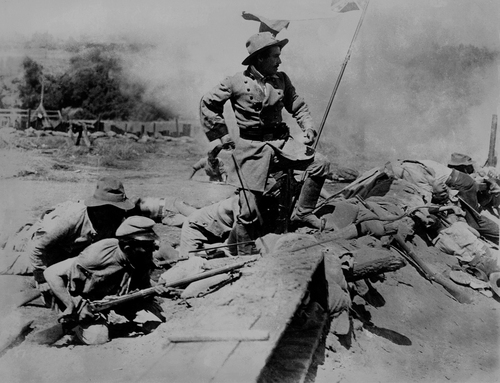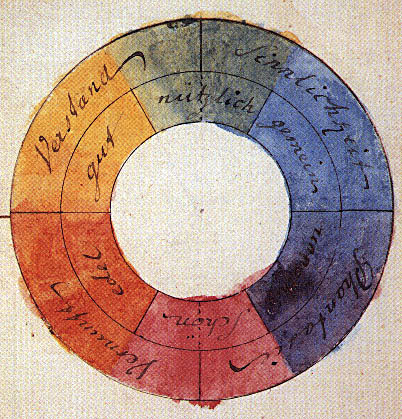|
Intolerance (film)
''Intolerance'' is a 1916 American Anthology film, anthology silent film directed by D. W. Griffith. Subtitled as ''Love's Struggle Throughout the Ages'' and ''A Sun-Play of the Ages'',Internet Archive foIntolerance (1916), D. W. Griffith. Retrieved May 21, 2016. the three-and-a-half-hour Epic film, epic intercuts four parallel storylines, each separated by several centuries: first, a contemporary melodrama of crime and redemption; second, a Biblical story: Christ's mission and death; third, a French story: the events surrounding the St. Bartholomew's Day massacre of 1572; and fourth, a Babylonian story: the Battle of Opis, fall of the Babylonian Empire to Persia in 539 BC. Each story had its own distinctive Colour Tint, color tint in the original print. The scenes are linked by shots of a figure representing Eternal Motherhood, rocking a cradle. Griffith chose to explore the theme of Toleration, intolerance partly in response to his previous film ''The Birth of a Nation'' (1915) ... [...More Info...] [...Related Items...] OR: [Wikipedia] [Google] [Baidu] |
Hettie Gray Baker
Hettie Gray Baker (July 12, 1880 – November 14, 1957) was an American film editor. Biography Born in Hartford, Connecticut, the daughter of Josiah Q. Baker and his wife Lizzie A. Chipman, Hettie attended public high school in Hartford before undertaking a special course of study at Simmons College (Massachusetts), Simmons College in Boston. She was employed at the Hartford Public Library during 1900–03, where she began writing movie scenarios during her spare moments. She sold her first story, titled, ''Treasure Trove'', to Vitagraph Studios. for $20 (), and continued to write and sell freelance works for the next six years. In 1903, she became a private secretary for the School for Social Workers in Boston, where she worked until 1907 when she was hired as a librarian for the Hartford Bar Library, a small law library. In 1913, she was employed by Hobart Bosworth's film company as a story editor. Her work included scenario writing and scripting stories for a series of silent ... [...More Info...] [...Related Items...] OR: [Wikipedia] [Google] [Baidu] |
Anthology Film
An anthology film (also known as an omnibus film or a portmanteau film) is a single film consisting of three or more shorter films, each complete in itself and distinguished from the other, though frequently tied together by a single theme, premise, or author. Sometimes each one is directed by a different director or written by a different author, or may even have been made at different times or in different countries. Anthology films are distinguished from " revue films" such as '' Paramount on Parade'' (1930)—which were common in Hollywood in the early decades of sound film, composite films, and compilation films. Anthology films are often mistaken with hyperlink cinema. Hyperlink cinema shows parts of many stories throughout a film, whereas anthology films show story segments of one at a time. Some mistaken examples include ''Pulp Fiction'' (1994) and '' Amores Perros'' (2000), distributing their storylines non-chronologically, separated by segments. Films *''Intolerance' ... [...More Info...] [...Related Items...] OR: [Wikipedia] [Google] [Baidu] |
Expo 58
Expo 58, also known as the 1958 Brussels World's Fair (; ), was a world's fair held on the Heysel/Heizel Plateau in Brussels, Belgium, from 17 April to 19 October 1958. It was the first major world's fair registered under the Bureau International des Expositions (BIE) after World War II and the fifth in Brussels overall. Expo 58 left a deep impression on Belgium. It was also the pretext for major upheavals and works in Brussels, whose boulevards were transformed into urban motorways. The Atomium, built for the occasion, has become one of the city's must-see landmarks. Background Expo 58 was the eleventh world's fair hosted by Belgium, and the fifth in Brussels, following the fairs in 1888, 1897, 1910 and 1935. In 1953, Belgium won the bid for the next world's fair, winning out over other European capitals such as Paris and London. Nearly 15,000 workers spent three years building the site on the Heysel/Heizel Plateau, north-west of central Brussels. Many of the building ... [...More Info...] [...Related Items...] OR: [Wikipedia] [Google] [Baidu] |
Silent Era
A silent film is a film without synchronized recorded sound (or more generally, no audible dialogue). Though silent films convey narrative and emotion visually, various plot elements (such as a setting or era) or key lines of dialogue may, when necessary, be conveyed by the use of inter- title cards. The term "silent film" is something of a misnomer, as these films were almost always accompanied by live sounds. During the silent era, which existed from the mid-1890s to the late 1920s, a pianist, theater organist—or even, in larger cities, an orchestra—would play music to accompany the films. Pianists and organists would play either from sheet music, or improvisation. Sometimes a person would even narrate the inter-title cards for the audience. Though at the time the technology to synchronize sound with the film did not exist, music was seen as an essential part of the viewing experience. "Silent film" is typically used as a historical term to describe an era of cinema prio ... [...More Info...] [...Related Items...] OR: [Wikipedia] [Google] [Baidu] |
Ku Klux Klan
The Ku Klux Klan (), commonly shortened to KKK or Klan, is an American Protestant-led Christian terrorism, Christian extremist, white supremacist, Right-wing terrorism, far-right hate group. It was founded in 1865 during Reconstruction era, Reconstruction in the devastated South. Various historians have characterized the Klan as America's first Terrorism, terrorist group.Fergus Bordewich. (2023). ''Klan War: Ulysses S Grant and the Battle to Save Reconstruction''. Penguin Random House The group contains several organizations structured as a secret society, which have frequently resorted to terrorism, violence and acts of intimidation to impose their criteria and oppress their victims, most notably African Americans, Jews, and Catholics. A leader of one of these organizations is called a Grand Wizard, grand wizard, and there have been three distinct iterations with various other targets relative to time and place. The first Klan was established in the Reconstruction era for me ... [...More Info...] [...Related Items...] OR: [Wikipedia] [Google] [Baidu] |
Racial Stereotype
An ethnic stereotype or racial stereotype involves part of a system of beliefs about typical characteristics of members of a given ethnic group, their status, societal and cultural norms. A national stereotype does the same for a given nationality. Stereotyping is typically associated with racism, and may also be used for humor in jokes. National stereotypes may relate either to one's own ethnicity/nationality or to a foreign/differing one. Stereotypes about one's own nation may aid in maintaining a national identity due to a collective relatability to a trait or characteristic, referred to as national character. Examples According to an article by ''The Guardian'' titled "European Stereotypes: What Do We Think of Each Other and Are We Right?", the Europe stereotype towards Britain is as " drunken, semi-clad hooligans or else snobbish, stiff free marketers", their view towards France is "cowardly, arrogant, chauvinistic, erotomaniacs", and they see Germany as "ruddy-fac ... [...More Info...] [...Related Items...] OR: [Wikipedia] [Google] [Baidu] |
NAACP
The National Association for the Advancement of Colored People (NAACP) is an American civil rights organization formed in 1909 as an interracial endeavor to advance justice for African Americans by a group including W. E. B. Du Bois, Mary White Ovington, Moorfield Storey, Ida B. Wells, Lillian Wald, and Henry Moskowitz (activist), Henry Moskowitz. Over the years, leaders of the organization have included Thurgood Marshall and Roy Wilkins. The NAACP is the largest and oldest civil rights group in America. Its mission in the 21st century is "to ensure the political, educational, social, and economic equality of rights of all persons and to eliminate race-based discrimination". NAACP initiatives include political lobbying, publicity efforts, and litigation strategies developed by its legal team. The group enlarged its mission in the late 20th century by considering issues such as police misconduct, the status of black foreign refugees and questions of economic dev ... [...More Info...] [...Related Items...] OR: [Wikipedia] [Google] [Baidu] |
The Birth Of A Nation
''The Birth of a Nation'' is a 1915 American Silent film, silent Epic film, epic Drama (film and television), drama film directed by D. W. Griffith and starring Lillian Gish. The screenplay is adapted from Thomas Dixon Jr.'s 1905 novel and play ''The Clansman: A Historical Romance of the Ku Klux Klan, The Clansman''. Griffith co-wrote the screenplay with Frank E. Woods and produced the film with Harry Aitken. ''The Birth of a Nation'' is a landmark of film history, lauded for its technical virtuosity. It was the first Serial film, non-serial American 12-Film reel, reel film ever made. Its plot, part fiction and part history, chronicles the assassination of Abraham Lincoln by John Wilkes Booth and the relationship of two families in the American Civil War, Civil War and Reconstruction era, Reconstruction eras over the course of several years—the pro-Union (American Civil War), Union (Northern United States, Northern) Stonemans and the pro-Confederate States of America, Con ... [...More Info...] [...Related Items...] OR: [Wikipedia] [Google] [Baidu] |
Toleration
Toleration is when one allows or permits an action, idea, object, or person that they dislike or disagree with. Political scientist Andrew R. Murphy explains that "We can improve our understanding by defining 'toleration' as a set of social or political practices and 'tolerance' as a set of attitudes." ''Random House Dictionary'' defines tolerance as "a fair, objective, and permissive attitude toward those whose opinions, beliefs, practices, racial or ethnic origins, etc., differ from one's own". The Merriam-Webster Dictionary associates toleration both with "putting up with" something undesirable, and with neglect or failure to prevent or alleviate it. Both these concepts contain the idea of alterity: the state of ''otherness''. Additional choices of how to respond to the "other", beyond toleration, exist. Therefore, in some instances, toleration has been seen as "a flawed virtue" because it concerns acceptance of things that were better overcome. Toleration cannot, therefore, ... [...More Info...] [...Related Items...] OR: [Wikipedia] [Google] [Baidu] |
Colour Tint
Color theory, or more specifically traditional color theory, is a historical body of knowledge describing the behavior of colors, namely in color mixing, color contrast effects, color harmony, color schemes and color symbolism. Modern color theory is generally referred to as color science. While there is no clear distinction in scope, traditional color theory tends to be more subjective and have artistic applications, while color science tends to be more objective and have functional applications, such as in chemistry, astronomy or color reproduction. Color theory dates back at least as far as Aristotle's treatise ''On Colors'' and Bharata_(sage), Bharata's Natya_Shastra, Nāṭya Shāstra. A formalization of "color theory" began in the 18th century, initially within a partisan controversy over Isaac Newton's theory of color (''Opticks'', 1704) and the nature of primary colors. By the end of the 19th century, a schism had formed between traditional color theory and color science ... [...More Info...] [...Related Items...] OR: [Wikipedia] [Google] [Baidu] |
Battle Of Opis
The Battle of Opis was the last major military engagement between the Achaemenid Empire and the Neo-Babylonian Empire, which took place in September 539 BC, during the Persian invasion of Mesopotamia. At the time, Babylonia was the last major power in Western Asia that was not yet under Persian control. The battle was fought in or near the strategic riverside city of Opis, located north of the capital city of Babylon in modern-day Iraq, and resulted in a decisive victory for Persia. Shortly afterwards, the Babylonian city of Sippar surrendered to Persian forces, who then supposedly entered Babylon without facing any further resistance. The Persian king Cyrus the Great was subsequently proclaimed as the king of Babylonia and its subject territories, thus ending its independence and incorporating the entirety of the fallen Neo-Babylonian Empire into the greater Achaemenid Empire. Location The battle took place in and around Opis, an ancient city situated on the Tigris River a ... [...More Info...] [...Related Items...] OR: [Wikipedia] [Google] [Baidu] |
Christ
Jesus ( AD 30 or 33), also referred to as Jesus Christ, Jesus of Nazareth, and many other names and titles, was a 1st-century Jewish preacher and religious leader. He is the Jesus in Christianity, central figure of Christianity, the Major religious groups, world's largest religion. Most Christians consider Jesus to be the Incarnation (Christianity), incarnation of God the Son and awaited Messiah#Christianity, messiah, or Christ (title), Christ, a descendant from the Davidic line that is prophesied in the Old Testament. Virtually all modern scholars of classical antiquity, antiquity agree that Historicity of Jesus, Jesus existed historically. Accounts of Life of Jesus, Jesus's life are contained in the Gospels, especially the four canonical Gospels in the New Testament. Since the Age of Enlightenment, Enlightenment, Quest for the historical Jesus, academic research has yielded various views on the historical reliability of the Gospels and how closely they reflect the hi ... [...More Info...] [...Related Items...] OR: [Wikipedia] [Google] [Baidu] |







